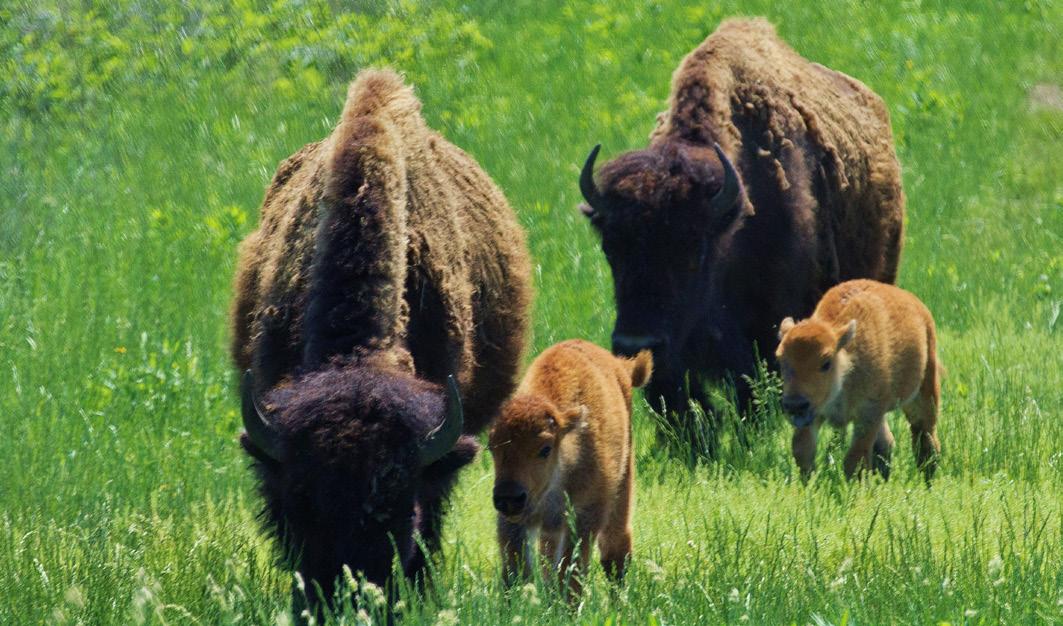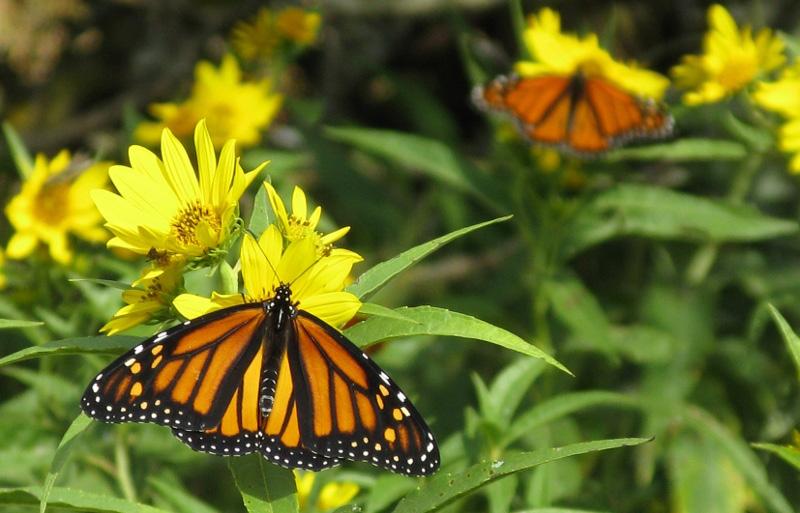
2 minute read
Dunn Ranch Prairie
Preserving a Part of Missouri’s Past with Plans for the Future
Prior to westward expansion, Missouri’s northern prairie region was a land teeming with wildlife. Large herds of bison roamed the vast grasslands, and Native American tribes followed the herds to obtain the food and shelter they needed to exist in the often-harsh conditions of the plains.
As settlers moved west, the prairies were turned under by the plow and planted in grasses and crops to provide food for the pioneers and grasses for grazing their cattle. Because of the loss of habitat and constant pressure from those moving west, Bison and other plains animals were pushed out of Missouri.
When the Dunn family homesteaded in northern Missouri 150 years ago, the land was miles of virgin bluestem and switchgrass — a sea of grass as far as the eye could see. As time went on, the original 15 million acres of Missouri grasslands diminished to the point that by the mid-1900’s, only a remnant remained.
In 1999 The Nature Conservancy was able to purchase 2281 acres from descendants of the Dunn family to preserve over 1000 acres of original prairie ground that had never been plowed, as well as start restoration on the rest of the property to bring back as much of the natural habitat as possible. Currently, the ranch stands at 3258 acres after additional acquisitions.
Through plantings of native grasses and prescribed burns, invasive grasses and plants are being eliminated. The prairie is home to over 200 native grasses, as well as numerous species of birds and other wildlife, including the prairie chicken, which is staging a strong comeback in the region. Dunn Ranch is also home to a population of the federally endangered Topeka Shiner. Efforts to improve habitat and provide protection for the species are ongoing.
In 2011, bison were introduced. Bison behaviors, such as wallowing, tree horning and roaming while grazing, increases diversity in grassland species – while their grazing patterns and the way they trample the ground provides varying habitats for wildlife and nesting birds.

In addition to efforts on the ranch, The Nature Conservancy works with local farmers and ranchers who want to improve the habitat on their property by seeding native plants, controlling invasive species and improving timber stands. “We want the area landowners to look at us as partners,” said Agriculture Strategy Manager Kent Wamsley. “We currently also have two pastures consisting of 400 acres of predominately native grasses. Ranchers who participate in conservation work on their properties can apply to graze this land while waiting for their own native grasses to become established.
Dunn Ranch Prairie is located in Northwest Missouri near the town of Hatfield and is open to the public year-round. “We want the facilities to be accessible and interactive,” said Wamsley. “We have added ADAaccessible parking, electric vehicle charging stations, improved signage and better walking trails. There are also elevated viewing platforms that give great views of the prairie and its abundant wildlife.”
For more information on Dunn Ranch Prairie and The Nature Conservancy in Missouri, visit www.nature.org/ missouri. To reach the Dunn Ranch directly, call 660-8673866 or email them at missouri@tnc.org.
MARCH - 2023











